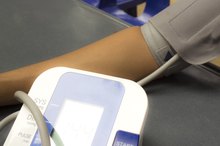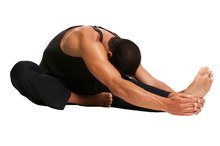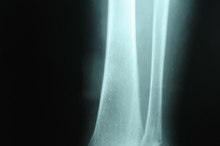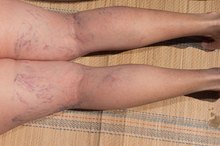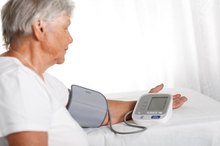What does fact checked mean?
At Healthfully, we strive to deliver objective content that is accurate and up-to-date. Our team periodically reviews articles in order to ensure content quality. The sources cited below consist of evidence from peer-reviewed journals, prominent medical organizations, academic associations, and government data.
The information contained on this site is for informational purposes only, and should not be used as a substitute for the advice of a professional health care provider. Please check with the appropriate physician regarding health questions and concerns. Although we strive to deliver accurate and up-to-date information, no guarantee to that effect is made.
How to Check Blood Pressure in the Ankle
Taking blood pressure readings at the ankle, also known as blood pressure in the calf, is done when blood pressure cuffs are a poor fit for the size or shape of both arms and when blood pressure readings cannot be taken on either arm due to swelling, injury, surgery, graft, double mastectomy or amputation. Another need for ankle blood pressure measurement occurs with the possibility of peripheral vascular disease 1. To test for this condition, the doctor takes blood pressure readings on all four limbs, comparing the higher reading for the legs with the higher reading for the arms.
If you are experiencing serious medical symptoms, seek emergency treatment immediately.
Select a blood pressure cuff of the proper size. The “bladder” of the cuff (the inflatable portion) should cover at least 80 percent of the circumference of the leg.
How To Take Your Blood Pressure with Sleeves
Learn More
Position the subject on her back, mention that you will return in 15 minutes and suggest that she relax during that time.
Bend the subject’s leg at the knee, keeping the foot flat.
How to Put on a Knee Brace Properly
Learn More
Close the cuff around the leg, with its lower edge about 1 inch above the protuberances on the inside and outside of the ankle, aligning the artery mark on the cuff above the artery in the ankle between the Achilles tendon and the inner ankle bone. Tighten the valve on the cuff so air won’t escape. Make sure the gauge is in a position to be read easily.
Position the stethoscope ear pieces so they are angled forward in the ears. Feel for the pulse just below the lower edge of the cuff. Place the diaphragm of the stethoscope on this spot. Listen to the pulse.
Squeeze the bulb to inflate the cuff. Continue squeezing until the gauge reads 30 mm of mercury (Hg) above the point at which the pulse could no longer be heard.
Open the blood pressure valve slowly so that pressure falls at a rate of about 2 mm Hg per second.
At the first sound, take a reading—this is the systolic pressure. At the final sound, take another reading—this is the diastolic pressure. Open the valve completely.
Tips
When possible, get a medical professional to supervise anyone taking blood pressure readings for the first time.
Subject should not have had alcohol or coffee within two hours of the blood pressure reading.
Subject should not exercise, eat or take or use medications, including nasal decongestant sprays, within 30 minutes of the blood pressure reading.
Subject should not have smoked within 15 minutes of the blood pressure reading.
Ensure that clothing does not interfere with the blood pressure cuff.
Warnings
Blood pressure cuffs should not be used on a leg with a deep vein thrombosis, graft, trauma, incision or swelling.
Wait at least one minute before repeating the procedure.
Subject and caregiver should avoid talking during the blood pressure reading. For some subjects, talking can result in an inaccurate high reading.
Related Articles
References
- How Is Peripheral Arterial Disease Diagnosed?
- American Medical Association. 7 simple tips to get an accurate blood pressure measurement.
- Bradyn TF. Blood pressure measurement essentials. John Hopkins Children's Center. Updated May 2, 2018.
- American Heart Association. Monitoring your blood pressure at home. Updated November 30, 2017.
Tips
- When possible, get a medical professional to supervise anyone taking blood pressure readings for the first time.
- Subject should not have had alcohol or coffee within two hours of the blood pressure reading.
- Subject should not exercise, eat or take or use medications, including nasal decongestant sprays, within 30 minutes of the blood pressure reading.
- Subject should not have smoked within 15 minutes of the blood pressure reading.
- Ensure that clothing does not interfere with the blood pressure cuff.
Warnings
- Blood pressure cuffs should not be used on a leg with a deep vein thrombosis, graft, trauma, incision or swelling.
- Wait at least one minute before repeating the procedure.
- Subject and caregiver should avoid talking during the blood pressure reading. For some subjects, talking can result in an inaccurate high reading.
Writer Bio
Based in Washington, DC, award-winning editor Barbara Conn has been writing about science, technology, small business, and general interest topics since 1984. Her articles have appeared in the Capital PC User Group “Monitor.” She earned a Bachelor of Science degree in chemistry from Bucknell University.
